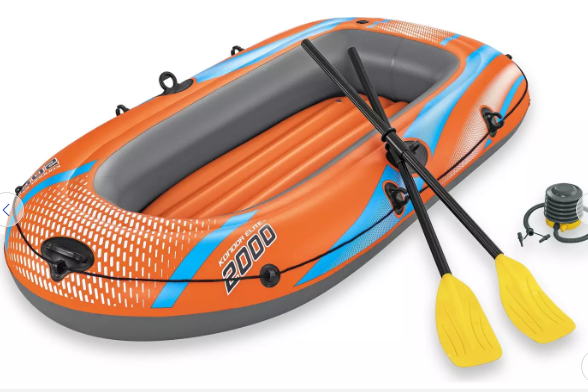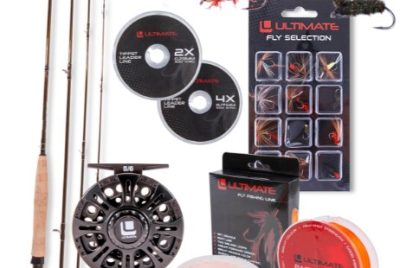Fly Fishing Raft
Introduction
As an avid fly fishing enthusiast, I’ve experienced firsthand the thrill of casting lines from the serene vantage point of a fly fishing raft. The combination of tranquil waters, breathtaking landscapes, and the anticipation of a prized catch creates an unparalleled angling experience. Join me as I guide you through the world of fly fishing rafts, helping you choose the perfect vessel for your fishing adventures.
Benefits of Fly Fishing Rafts
The allure of fly fishing on a raft is undeniable, and it comes with several distinct advantages. One of the most compelling benefits is accessibility to remote fishing spots. With a raft, you can navigate waters that larger boats can’t reach, opening up a world of untouched fishing havens. Additionally, rafts provide a stable platform for casting and reeling, allowing you to maintain your balance and execute precise casts. Their versatility in different water conditions—from calm lakes to flowing rivers—makes them an ideal choice for anglers who enjoy diverse fishing environments.
Types of Fly Fishing Rafts
When it comes to fly fishing rafts, you have several options to consider. Inflatable rafts are popular for their portability and ease of setup. These rafts can be quickly inflated and deflated, making them convenient for spontaneous fishing trips. Frameless rafts offer a simplified design that enhances maneuverability, making them suitable for navigating tight spaces and tricky water currents. For anglers seeking stability and customization, pontoon-style rafts provide a comfortable platform and the ability to outfit them with various fishing accessories.
Considerations When Choosing a Fly Fishing Raft
Selecting the right fly fishing raft requires careful consideration of several factors. First, assess the fishing environment and water type you’ll primarily encounter. Different rafts excel in different settings, so choose one that matches your preferred fishing spots. Next, consider the size and capacity of the raft. Will you be fishing solo, with a friend, or in a group? Lastly, evaluate the portability and transportation of the raft. Some rafts are more compact and easier to transport, while others offer more storage space but may require more effort to move.
Inflatable Rafts: Portability and Setup Ease
Inflatable rafts are a favorite among fly fishing enthusiasts due to their portability and straightforward setup. These rafts can be inflated using a pump and assembled within minutes. This convenience is especially advantageous for anglers who enjoy exploring different fishing spots. When choosing an inflatable raft, consider factors such as the number of anglers it can accommodate and the available storage space for gear. Opt for a size that strikes a balance between portability and comfort on the water.
Frameless Rafts: Simplified Design and Maneuverability
Frameless rafts are characterized by their simplified design, consisting of an inflatable body without a rigid frame. This design offers exceptional maneuverability, making them ideal for navigating narrow waterways and challenging currents. Frameless rafts are often lighter and more compact than other types, making them a suitable choice for anglers who prioritize ease of transportation. Despite their simplicity, frameless rafts provide ample space for gear storage, ensuring you’re well-prepared for your fishing adventures.
Pontoon-Style Rafts: Stability and Customization
Pontoon-style rafts are recognized for their stability and versatility on the water. The dual pontoons on either side of the raft provide excellent stability, allowing you to stand and cast with confidence. These rafts also offer ample space for customization, allowing you to outfit them with fishing-specific accessories such as rod holders, fish finders, and storage compartments. Pontoon-style rafts are particularly comfortable for extended fishing trips, offering a stable and supportive platform.
Matching Raft Features with Fishing Styles
Consider your preferred fishing style when selecting a fly fishing raft. If you enjoy dry fly fishing, a raft with a stable platform is essential for accurate casting. Anglers who prefer nymph fishing might opt for a raft with sufficient space for multiple rods and a comfortable seating arrangement. For those who indulge in streamer fishing, a versatile raft that allows for easy movement and quick access to gear is advantageous.
Essential Accessories for Your Fly Fishing Raft
Enhance your fly fishing raft setup with a range of essential accessories that improve your fishing experience. An anchor system keeps your raft stationary in a fishing spot, allowing you to focus on casting. Rod holders provide a hands-free solution for managing multiple lines and baits. Equipping your raft with a fish finder and other electronics enables you to locate fish and underwater structures, increasing your chances of success.
Budget Considerations and Investment
When choosing a fly fishing raft, budget considerations play a role in your decision-making process. While some rafts may come with a higher initial cost, the investment can pay off in terms of quality and durability. Evaluate the features that matter most to you and find a raft that fits your budget without compromising on essential aspects. Remember that a well-chosen raft can provide years of fishing enjoyment and memorable experiences.
Safety Measures and Regulations
Safety should be a paramount concern when enjoying fly fishing on a raft. Always wear a life jacket or personal flotation device (PFD) while on the water. Familiarize yourself with boating and fishing regulations specific to your area, and ensure you have the required permits and licenses. Be prepared for varying weather conditions by packing appropriate clothing, sunscreen, and staying informed about any potential changes in the weather forecast.
Personal Experience: My Journey with Fly Fishing Rafts
Throughout my fly fishing journey, I’ve had the privilege of experiencing different types of fly fishing rafts. One memorable adventure involved exploring a tranquil mountain river on an inflatable raft, where the ease of setup allowed me to focus on the thrill of the catch. Another time, a pontoon-style raft provided unmatched stability as I cast my line in a serene lake. These experiences have reinforced my belief that choosing the right raft enhances not only your fishing success but also the overall joy of being on the water.
Conclusion
In the realm of fly fishing, a well-chosen fly fishing raft serves as your gateway to uncharted waters and unparalleled angling experiences. By understanding the benefits and features of different types of rafts, considering your fishing preferences, and prioritizing safety, you’re poised to embark on countless fishing adventures with confidence. Remember that your raft is not just a vessel—it’s a platform that enhances your connection with nature and the thrill of the catch.
FAQs
- Are fly fishing rafts suitable for beginners? Yes, fly fishing rafts can be suitable for beginners, especially those who enjoy fishing in diverse waters and wish to access remote fishing spots.
- Can I stand while fishing on a pontoon-style raft? Yes, pontoon-style rafts provide excellent stability, allowing anglers to stand and cast comfortably.
- Do I need a fishing-specific raft for fly fishing? While not mandatory, a fishing-specific raft offers features and designs tailored to enhance your fly fishing experience.
- Can I transport an inflatable raft easily? Yes, inflatable rafts are known for their portability. Most models can be deflated and rolled up for convenient transportation.
- What safety equipment is essential for fly fishing on a raft? Wearing a life jacket or personal flotation device (PFD) is essential for safety. Additionally, carrying a communication device and adhering to local boating regulations is crucial.



